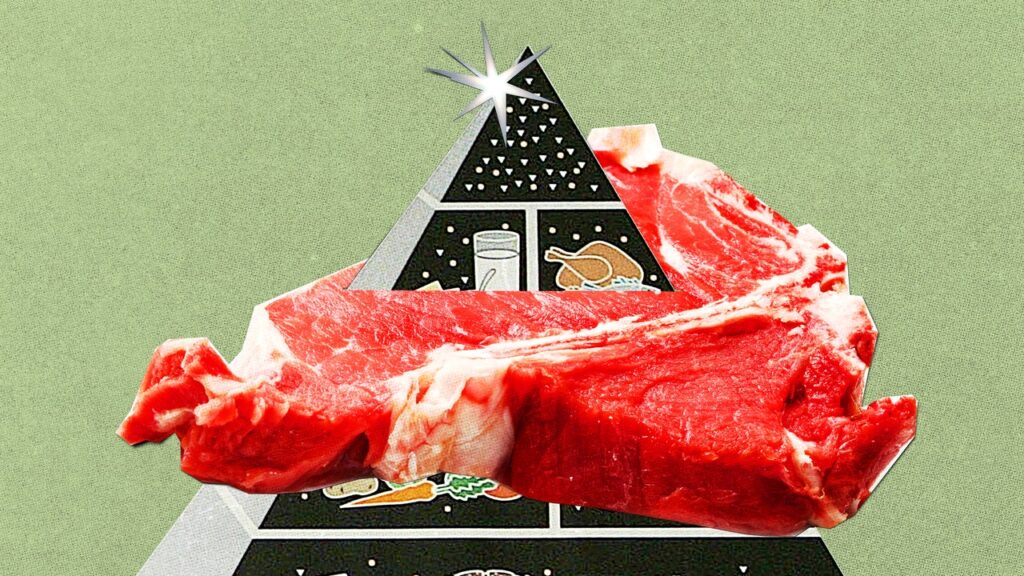Walk into a Sweetgreen and you might be surprised to find beef on the menu—specifically, a caramelized garlic steak. As of May 7, the health-conscious fast-casual salad chain offered grass-fed, pasture-raised steak at all of its locations nationwide. Those who go to Sweetgreen for its kale and not its chops may be taken aback.
But co-founder and chief concept officer Nicolas Jammet says the inclusion of steak was a no-brainer. “After hearing anecdotal feedback from guests, we found that 75 percent of surveyed customers were seeking substantial choices beyond salads and bowls for dinner,” he tells GQ.
Some of the early press on Sweetgreen’s new menu item has focused on the environmental impacts of raising beef. The New York Times chimed in with an article juxtaposing Sweetgreen’s new menu item with its desire to be climate neutral by 2027. The United Nations contends that meat production contributes to 14.5 percent of global greenhouse-gas emissions, based partly on the analysis that it takes an inefficient 25 calories of feed to produce one calorie of beef.
Beyond the climate discussion, however, is a more fundamental question: Is steak a health food now?
Sweetgreen seems to think so.“Red meat is a whole food,” says Samantha Cassetty, a registered dietitian and nutrition consultant for the chain. “And what we want people to do is to eat more whole foods and fewer heavily processed foods.”
Where’s the Beef?
Nearly nine in 10 people eat meat regularly, and about three of every five people say that eating red meat is “part of the American way of life.” This polling data tends to skew the way one might expect: More Republicans than Democrats eat meat, and a little more than half of meat-eaters surveyed are convinced that anyone trying to dissuade people from eating red meat are trying to literally control what they eat.
The conventional dietary wisdom around red meat is that less is better. The routine criticism is that eating beef will lead to cardiovascular risks or certain types of cancers. But beef’s boosters have some points of their own: It’s undeniable that red meat contains nutrients that are essential or important for our overall health. A quarter-pound of lean ground beef includes zinc, selenium, niacin, and B vitamins. It’s also an excellent source of heme iron, which aids blood cells in transporting oxygen around the body.
“You absorb the best from animals, and the best from red meat,” says Tony Allemon, a nutritionist and physician assistant at a urology clinic in Beverly Hills. Patients he sees who complain about having little to no energy, low libido, and a mental fogginess that clouds their days are typically deficient in heme iron. “We’ll get them on a diet regimen to introduce heme iron, and their energy comes back to normal,” he says.
Red meat is also, of course, an excellent source of protein. We need protein for healthy skin and nails, for building muscle, for making connective tissue in the body. You need much more if you’re very active (though most Americans are already getting plenty).
Steak Is Good (But So Are Plants)
Above all, what Cassetty and Allemon stress are two things. Everyone is different, which means nutrition will be different. And that, if you want to eat red meat, you should do it in a specific way.
One study from 2018 notes the key point echoed by both Cassetty and Allemon: The red meat on your plate is much better as unprocessed, lean cuts. (Flank, tenderloin, filet, New York strip—all are good options.) Grass-fed beef will be more expensive, but it will have a lower fat content and higher levels of omega-3 and omega-6 fatty acids.
And you should eat it alongside a wide variety of other foods. “You want to consume red meat in the context of the Mediterranean diet,” says Cassetty, referencing the eating regimen known for protecting people from chronic disease and other conditions. “I think it is super crystal clear that we should be eating more whole foods and more plant foods.”
This diet notably stresses getting most of your nutrition from fruits and vegetables, and de-emphasizes animal protein. So go ahead. Eat the steak. But maybe not to the exclusion of everything else.

